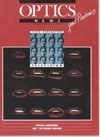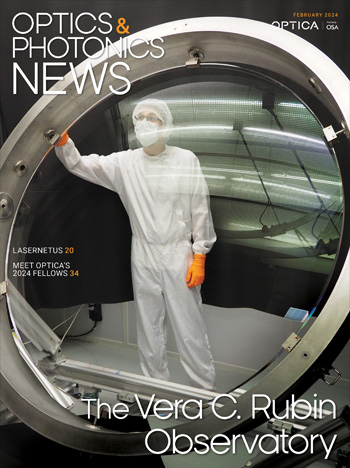
January 1990 Issue
Feature Articles
Fifth generation television
High Definition Television (HDTV), which dates from the early 1970s, is the evident technical innovation of this era. As canonically defined, it is little more than a scaling of the basic parameters of existing television by a factor of two. If anything, it is the last incarnation of the first generation of television rather than the first embodiment of the next. This time, however, we may be able to break the mold of successive changes in use and technology and progress to a new generation of television systems that implies new quality as well as new program styles. What is it that allows us to do better now? What are the real opportunities? Why is a new generation of television possible or even inevitable now?
by Andrew LippmanScience and competitiveness
Basic science should be pursued for its own sake, as a characteristic cultural attribute of human society. The benefits are far broader than just economic advantage, although it is true that science is a rich source of inspiration and stimulus for inventiveness. But much more than the traditional pursuits of basic science is needed for true international competitiveness: extend its concerns to problems of global stability and couple its results to a vertically integrated process aimed at developing products and services for the international marketplace.
by Thomas P. RonaU.S. working to meeting European deadline for laser standards
Last month's column described the formation of ISO/TC172/SC9— Electro-optical systems—and ISO's efforts to keep up with the work of CEN, the European standards writing body that in turn is being pressured by the 1992 deadline for European free trade. This month, we will outline more of the U.S. activity in response to this international effort in the field of laser optics.
by Robert E. ParksSimple tricks of vision
We take the human eye for granted, but it is a remarkably powerful and sophisticated optical system. The array of optical sensors that form the retina are connected to a pattern recognition system far more powerful than the fastest supercomputer—the vision center of the human brain. The eye and the brain together give us an extremely detailed picture of the world, compensating smoothly for some of their own limitations. However, a few simple experiments can reveal some of the eye's limits.
by Jeff HechtImpact of Erbium-doped amplifiers on optical communication systems
This article outlines the recent studies on optical amplifiers and compares the features of fiber amplifiers with those of other optical amplifiers. The impact of this new amplifier technology is then discussed and the future possibility of communication systems with optical amplifiers is assessed. Systems applications are described using the effectiveness of these fiber amplifiers—long repeater spacing systems, undersea systems, soliton transmission, and subscriber loop systems. A compact fiber amplifier for general use is also mentioned.
by Sadakuni Shimada
![A multiplexed image of a human tonsil acquired. [NIAID] using the iterative bleaching extends multiplexity (IBEX) method.](https://opnmedia.blob.core.windows.net/$web/opn/media/images/articles/2024/0424/departments/202404-cover-web.jpg?ext=.jpg)

